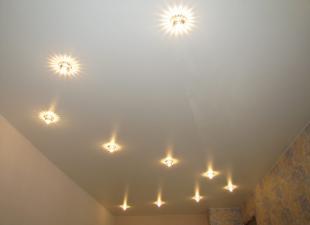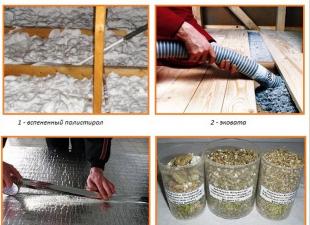Autonomous water supply of a country house, its types and features are considered. The sources of water, types of pumps are listed and described, as well as the scheme of autonomous water supply for a private or country house is considered.
Very often in a country house it is not possible to live comfortably in winter due to the lack of basic conditions, which are a sewage system and autonomous water supply. Indeed, without these systems, life in the house cannot be called full and comfortable, and such conditions should be laid down even at the design stage. (See also: )
Water sources providing autonomous water supply
1. Well
Many people do not pay due attention to the fact that the house is not connected to the central water supply, and limit themselves only to digging a well nearby. Of course, the well will not be superfluous as an alternative source of water, but it should not be considered as a full-fledged type of autonomous water supply. First of all, the quality of well water, that is, groundwater, cannot be compared with the quality of groundwater. Various types of pollution in the form of chemicals and biological components (bacteria, etc.) do not allow the full use of well water as drinking water.Figure 1: Conventional well
Even limiting water consumption to a minimum volume of 30 - 50 liters / person per day, it seems difficult to organize a bath or shower due to the limited capacity of the well. What can we say about fountains, ponds, a swimming pool, watering a garden, washing a car and other benefits familiar to many, without which the maintenance of a modern house outside the city cannot be imagined. According to experts, a family of 4 consumes on average up to 1500 liters every day, and this does not take into account irrigation or irrigation, where water is also consumed in significant volumes.

Figure 2: Scheme of a well for automatic water supply
This type of wells is drilled more deeply, and their productivity is about 3 cubic meters per hour. Such a water consumption is able to fully satisfy a wide variety of household and drinking needs, including the organization of irrigation, water supply to the pool and other processes that require high water consumption. The great advantages of an artesian well include its increased reliability and long service life.

Figure 3: Drilling a well
Modern methods and systems for water purification
The autonomous water supply of a country house, of course, cannot be limited only to drilling a well. Such a system contains a whole complex of structures that serve not only to supply water to the house, but also to bring the water itself to the required quality, as well as all the devices of the system are designed to make its operation reliable, non-malfunctioning and easy to maintain, manage and possible repairs. Already at the inlet of the water supply to the house, it is necessary to provide for the installation of modern treatment systems that can provide the required water quality.It will be necessary to install filters and such treatment systems that will mechanically clean water from suspended matter, remove metals and, if necessary, soften the water. When autonomous water supply is produced with water from a well, then in this case, some additional filters are required for water purification from pesticides, organic pollutants, and heavy metal salts. Although the cost of drilling a well will be significant, the cost of treating water to ensure proper water quality will be lower. Such water will meet state drinking water standards. (See also: )

Figure 4: Water supply of a country house
Autonomous water supply system
Such water supply systems for residential buildings are constructed if it is impossible to use centralized water supply or in the absence of it. The autonomous water supply system includes: a water intake structure, installations for raising water, a regulating tank (open free-flow tank or hydraulic pneumatic tank), pipelines for the external and internal network. If necessary, the system is equipped with cleaning and disinfection units.Advice! As a rule, groundwater is the source of water, while it is desirable to give preference to those aquifers that are protected by watertight layers of rock from all kinds of pollution.
Autonomous water supply system diagrams
In modern water supply systems, quite a lot of different schemes are used, but conditionally they can be divided into 2 main groups: (See also:)- local water supply scheme;
- diagram for connecting to a centralized system.

Figure 5: Water supply scheme of a private house
Considering that it is quite difficult to find a water supply system nearby, equipped with a pumping station and water treatment systems, it is reasonable to conclude: when constructing a water supply system, a sewage system is simply necessary. For laying a water supply system, pipes made of various materials can be used: cast iron, steel, galvanized and plastic. The diameter of steel and plastic pipes for input must be at least 20 mm, and cast iron pipes must be at least 50 mm. It is necessary to lay pipes at a depth of at least 40 mm below the depth of soil freezing; it is recommended to use thermal insulation.
Important! The required slope must be observed, which is 0.003.
If your autonomous water supply scheme does not provide for a connection to a centralized water supply, and they are not going to build it in the near future, then this is not a reason for frustration. With the necessary funds, patience and desire, you can easily create your own system to provide your home with water. The first stage of construction should be the installation of an electric pump. Depending on the type, the pumps can be installed on a concrete slab, submerged in water or on its surface.
Important! Each of these types has its own characteristics, so you need to carefully read the technical characteristics before purchasing a pump. (See also: )
Pump types
- Surface - such pumps are used to supply water from the surface of open reservoirs, shallow wells and wells. An important characteristic of such devices is their resistance to the ingress of various suspensions and sand that may be contained in the pumped water. In this regard, when choosing, it is recommended to give preference to devices with housings and working surfaces made of stainless steel, since this material is more resistant to abrasive particles compared to cast iron. Composites and plastics are widely used in the manufacture of pumps, which do not corrode at all.

Figure 6: Surface pump
- Submersible - this type of pump is used when groundwater occurs at a depth of over 8 meters. They are, as a rule, in the form of a cylinder of small diameter, since they are used in narrow wells and deeper wells. Autonomous water supply of a private house with such a well will not bring additional trouble. Submersible pumps are well and borehole.

Figure 7: Submersible pump
- Downhole - such pumps are located on a hanging cable in a well and are capable of pumping water from a depth of up to 200 meters. Increased requirements are imposed on such devices in terms of reliability and durability, because it is quite difficult to pull them out of the well in order to carry out preventive work. Therefore, well pumps are made mainly of high strength stainless steel.

Figure 8: Downhole pump
The use of materials is permitted only if there is an indexed link to the page with the material.
 parlini.ru Repair of an apartment, a summer residence and a house.
parlini.ru Repair of an apartment, a summer residence and a house.


